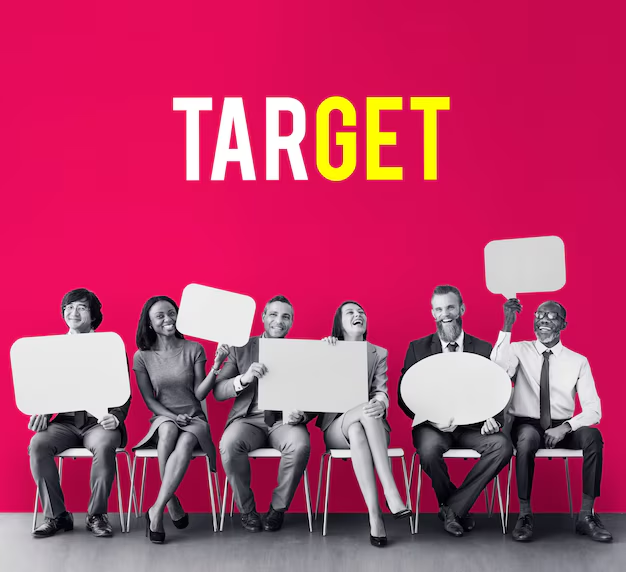Introduction:
The Rise of the Micro-Influencer
In 2024, bigger isn’t always better. While celebrities and mega-influencers dominate headlines, a quiet revolution is happening in affiliate marketing: micro-influencers (10k–100k followers) are driving higher conversions, engagement, and trust than their macro counterparts.
Take Sarah, a micro-influencer in sustainable living. With just 25k Instagram followers, her affiliate posts about eco-friendly laundry detergent generated $18k in sales last quarter. Meanwhile, a macro-influencer with 500k followers promoting the same product saw a 0.2% click-through rate.
This guide dives into why micro-influencer affiliate campaigns outperform macro strategies, how to forge niche influencer partnerships, and real-world case studies proving that small audiences can deliver big results.
Chapter 1:
Why Micro-Influencers Win in 2024

1.1 Higher Engagement Rates
- Micro-influencers average 6% engagement rates vs. 1.5% for macro-influencers (Later.com).
- Example: A parenting micro-influencer’s post about organic baby formula sparked 1,200 comments from moms asking for recommendations.
1.2 Trust and Relatability
- 82% of consumers trust micro-influencers’ recommendations over celebrities (Edelman).
- Why? Followers view them as peers, not paid promoters.
1.3 Niche Authority
- Micro-influencers dominate hyper-specific niches (e.g., vegan skincare for sensitive skin).
- Their audiences are highly targeted, leading to warmer leads.
1.4 Cost-Effectiveness
- Macro-influencer partnerships: 5k–20k per post.
- Micro-influencers: 200–1k per post + affiliate commissions.
Chapter 2:
How to Structure Micro-Influencer Affiliate Campaigns

2.1 Identify the Right Influencers
- Tool: Use Aspire IQ or Up fluence to filter influencers by niche, engagement rate, and audience demographics.
- Red Flags: Fake followers, generic comments (“Nice pic!”), or irrelevant partnerships (e.g., a fitness influencer promoting accounting software).
2.2 Offer Value Beyond Commissions
- Micro-influencers prioritize partnerships that align with their brand. Sweeten the deal with:
- Exclusive discounts for their audience.
- Free products for honest reviews.
- Long-term collaborations (e.g., 6-month ambassadorship).
2.3 Co-Create Authentic Content
- Avoid scripted posts. Let influencers showcase products their way:
- “How I Use This Reusable Straw During Hikes” (adventure niche).
- “Why This Zero-Waste Shampoo Saved My Curly Hair” (beauty niche).
2.4 Track Performance
- Metrics to Monitor:
- Click-through rate (CTR) on affiliate links.
- Conversion rate (sales per 1k followers).
- Audience sentiment (comments/DMs).
- Tools: Impact Radius, Tapfiliate, or Bitly for tracking.
Chapter 3:
Case Studies – Micro-Influencers Outperforming Macro Campaigns

Case Study 1: Eco-Friendly Cleaning Products (Niche: Sustainable Living)
- Brand: Eco Glow (startup selling plant-based cleaners).
- Strategy: Partnered with 8 micro-influencers (5k–50k followers) in sustainability.
- Tactics:
- Sent free products for unboxing videos.
- Created a unique discount code for each influencer (“SARAH20”).
- Hosted a TikTok challenge: “Show Us Your Green Cleaning Routine.”
- Results:
- 12x higher CTR than a macro-influencer campaign.
- $45k in sales in 3 months.
- 1,200+ user-generated content (UGC) posts.
Case Study 2: Indie Board Games (Niche: Tabletop Gaming)
- Brand: Dungeon Craft (independent game studio).
- Strategy: Collaborated with 10 micro-influencers on YouTube and Twitch.
- Tactics:
- Gave early access to new games for live-streamed reviews.
- Offered 15% affiliate commissions (vs. industry-standard 5–10%).
- Results:
- 3,500 game units sold in 2 months.
- 85% of sales traced to micro-influencer links.
Case Study 3: Pet Supplements (Niche: Holistic Pet Care)
- Brand: PawsWell (CBD oil for anxious dogs).
- Strategy: Partnered with 5 pet micro-influencers on Instagram.
- Tactics:
- Shared heartfelt stories of pets’ behavioral improvements.
- Ran a giveaway: Tag a friend + follow both accounts to win a 3-month supply.
- Results:
- 8,500+ entries (doubling the brand’s Instagram followers).
- $22k in affiliate-driven revenue.
Chapter 4:
How to Find and Vet Niche Influencers

4.1 Platforms for Discovery
- Instagram: Search niche hashtags (e.g., #ZeroWasteMom, #PlantBasedDads).
- Pinterest: Look for creators with detailed DIY guides.
- Twitch/YouTube: Find passionate gamers, coders, or hobbyists.
4.2 Vetting Checklist
- Audience Quality: Are followers real? Use HypeAuditor or IG Audit.
- Engagement: Do posts spark meaningful conversations?
- Brand Alignment: Does their content vibe with your product?
Chapter 5:
Negotiating Win-Win Partnerships

5.1 Payment Models
- Commission-Only: Risk-free for brands, but may attract low-effort influencers.
- Hybrid: Base fee + commissions (e.g., $300 + 10% per sale).
- Gifted: Free products + affiliate links (ideal for startups).
5.2 Contract Essentials
- Deliverables: Number of posts, platforms, and content type.
- Exclusivity: Can they promote competitors?
- Disclosures: Mandatory FTC-compliant tags (e.g., #ad, #affiliate).
Chapter 6:
Tools to Automate Micro-Influencer Campaigns

- Grin: Manages influencer outreach, contracts, and payments.
- Reversion: Tracks affiliate sales from influencer links.
- Canva: Provides influencers with branded templates for Stories/Reels.
Chapter 7:
Common Mistakes to Avoid

- Ignoring Micro-Influencers’ Creative Freedom: Don’t force jargon-heavy scripts.
- Overlooking Nano-Influencers: Those with 1k–10k followers can drive hyper-local sales.
- Failing to Nurture Relationships: Send thank-you notes or share their content.
Chapter 8:
The Future of Niche Influencer Partnerships

- AI Matchmaking: Tools like Influence.co use AI to pair brands with ideal creators.
- Community Building: Micro-influencers will pivot to private Discord groups for deeper engagement.
- Video-First Content: TikTok and Instagram Reels dominate—prioritize video-friendly campaigns.
Conclusion: Think Small, Earn Big
In 2024, micro-influencer affiliate campaigns aren’t just a trend—they’re a necessity for brands seeking authentic connections. By focusing on niche influencer partnerships, you’ll tap into engaged communities, boost conversions, and build long-term loyalty. Start small: Partner with 2–3 micro-influencers, track their impact, and scale what works.
FAQs
Q: How much should I pay micro-influencers?
A: 200–1k/post + 5–15% commissions, depending on niche and reach.
Q: Can micro-influencers work with Amazon Associates?
A: Yes! Share your affiliate tag, but ensure they disclose links properly.
Q: How do I handle influencers with fake followers?
A: Use tools like Social Blade or Hype Auditor before signing contracts.
